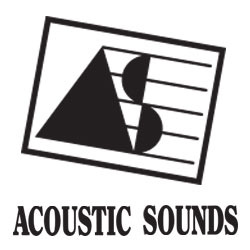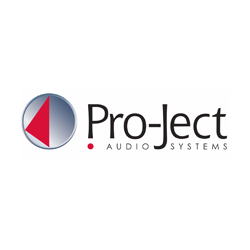So all is well in Surround-Sound Land, eh? For once, the home entertainment merchants have standardised, right?
Not.
Huh? Isn’t the world of home cinema already and emphatically Dolby-Surrounded? Stop and smell the matrices, or at least look at the logos buried in the small print on the tape you just rented and gracing the piles of hardware filling or about to fill the shops: Dolby Stereo. Dolby Surround. Dolby Digital. Dolby S. THX. Dolby Pro-Logic. AC-3. Dolby Spectral Recording. Face it, or pull the trigger: “Dolby” is home entertainment’s answer to the Good Housekeeping Seal of Approval, the mere mention of the name being a guarantee of global uniformity.
Hey, it’s so establishment that it even served as the basis of a gag in This Is Spinal Tap. It is, and not just figuratively, a license to print money. And whatever criticisms there might be of certain Dolby practices (you don’t exactly see audio reviewers and tape habituées suffering woodies at the mention of Dolby C), the world at large owes Dolby a hearty thanks for eliminating wasteful competition which would have only caused unresolved format wars.
OK, OK, so some of the Dolby Surround rivals which fell by the wayside weren’t necessarily inferior. But when the stakes are as high as those related to global uniformity (especially when a licensing fee is at stake), the first up at bat often wins. In the case of surround sound, it was almost the last up at bat, with Dolby winning by sheer might.
In case you’re young enough to have missed the first major bout of surround sound in the home, some 25 years ago, here’s a far-from-complete roster of professional and domestic playback and recording formats, surround sound technologies, noise reduction and compression/expansion systems which CD (in its various guises), VHS, Laser Disc, Dolby Pro-Logic and AC-3 have outlasted: CD-4, dbx, SQ, QS, Elcaset, Video 2000, 8-track, holophonics, bi-naural, Space Sound, Cinerama, Betamax and that stupid video disc which used a stylus.
So we should be grateful that it’s all so easy to set up a home cinema, right? No messing about: just go for the double-D logo.
But there’s always been dissension. Granted, it most often comes from the pure audio sector, where Golden Ear types have objected to the horrid artefacts of matrix decoding, the extra hiss, the phase anomalies, the indistinct imagery, the myriad whooshes and the overall lack of realism presented by any and all of the various surround formats.
Rarely can one accuse the audio community of rampant maturity, but during the last decade we’ve seen a reduction in the type of name-calling and the sort of rabidity which was encouraged by certain manufacturers. It’s as if the tweakers and the purists have finally understood the global agenda, that the likes of Sony and Philips and Matsushita don’t really give a toss what that 0.0001% of the world market thinks. Instead, there’s been a drive to separate the two approaches when – in an ideal world – pure audio and home cinema would form a perfect whole.
So what’s happened? You have a situation where the state-of-the-art pure audio systems and their home cinema system equivalents are mutually exclusive…and not because the videophiles or audiophiles are behaving like children. Quite simply, the best pure home cinema systems make a hash of two-channel, audio-only programme material, while straight audio rigs (even those composed of cost-no-object, high end gear) don’t seem to deal too well with the exaggerated dynamics and sonic trickery of blockbuster cine-excess, even when set up with the extra channels.
Amusingly, there’s been an unexpected response to the dilemma, one of arch realism despite its intrinsic snobbery. Both the cynics and the consumerists have agreed that the ideal solution would be two systems and two rooms, one for films, one for music. But this presupposes big homes with spare rooms, or – more importantly – double budgets. However honest a solution this might be, it precludes the participation of all but a well-heeled minority.
JBL tried to do it it all with one system, developing the Systhesis range that includes set-ups which actually feature main speakers containing two sets of drivers; it switches from one set to the other according to the source, but it seemed to work better in cine-mode than in stereo.
So now we’re seeing what might be called the first generation of post-home cinema audio products, designed to create a semblance of surround without massacring the pure audio performance of the given system. And to do this, designers have looked to the past, to the original Hafler surround set-up.
It’s arguable that all modern surround sound systems, with the exception of truly discrete all-digital set-ups, owe something to Hafler. What was unique about the “Hafler array” was its freedom from extra hardware, although Dynaco offered a dirt-cheap switch box which made it easier and provided a rear-channel level control. Merely wiring up a pair of rear-channel speakers in a particular way provided the ambient retrieval needed to create a sense of depth.
But remember: the Hafler method emerged as a pure audio product. What made it so politically acceptable was the way it left the front speakers alone. No matter what it extracted in the way of rear channel sound, the main speakers still delivered unpolluted sound.
Enter companies like Meridian, Naim and Audio Research, among the first of the pure audio companies to look beyond mere Dolby compatibility…and to remember that their core markets are audiophiles, not subscribers to Cahiers du Cinema. Meridian got the ball rolling by turning up at hi-fi shows with music-only surround-sound demonstrations, while Naim’s and Audio Research’s first processors are Dolby-free zones, deliberately conceived to give priority to the main left and right channels. But that suggests that the surround section is an afterthought, doesn’t it? Er, no.
Not having tried either the Meridian or Naim systems at home, I’m loath to make bold claims about their preformance in both audio and cinema modes. But I have used the Audio Research SDP1 – full review to follow when Editor Clerkson clears some space – and I’m happy to describe it as Hafler With Bells On It.
Unlike the funky old Hafler array of yore, the SDP1 provides rear channel delay to create a facsimile of the Dolby effect, while it also features a centre-channel output and level controls for left-rear, right-rear and centre channels. But underneath it all, the rear channels are ambient rather than discrete, the centre is a summing of left and right, and the main speakers are left alone. Bypass it and it’s like you’ve never tampered with the pure audio. Switch it in, and the room fills with sound.
True, it doesn’t provide the kind of pinpoint positioning that enables you to trace the arc of a projectile and its explosion to a tenth of a degree. Surround-sound porno buffs will not be able to locate precisely where the trickle of — you get the picture. But what everyone gets out of the SDP1 is better sound quality, whether in cinema or music mode. And that’s just what’s been keeping some audiophiles from embracing surround sound.
Question is: can you live without a logo?
(Home Entertainment, September 1995)






















